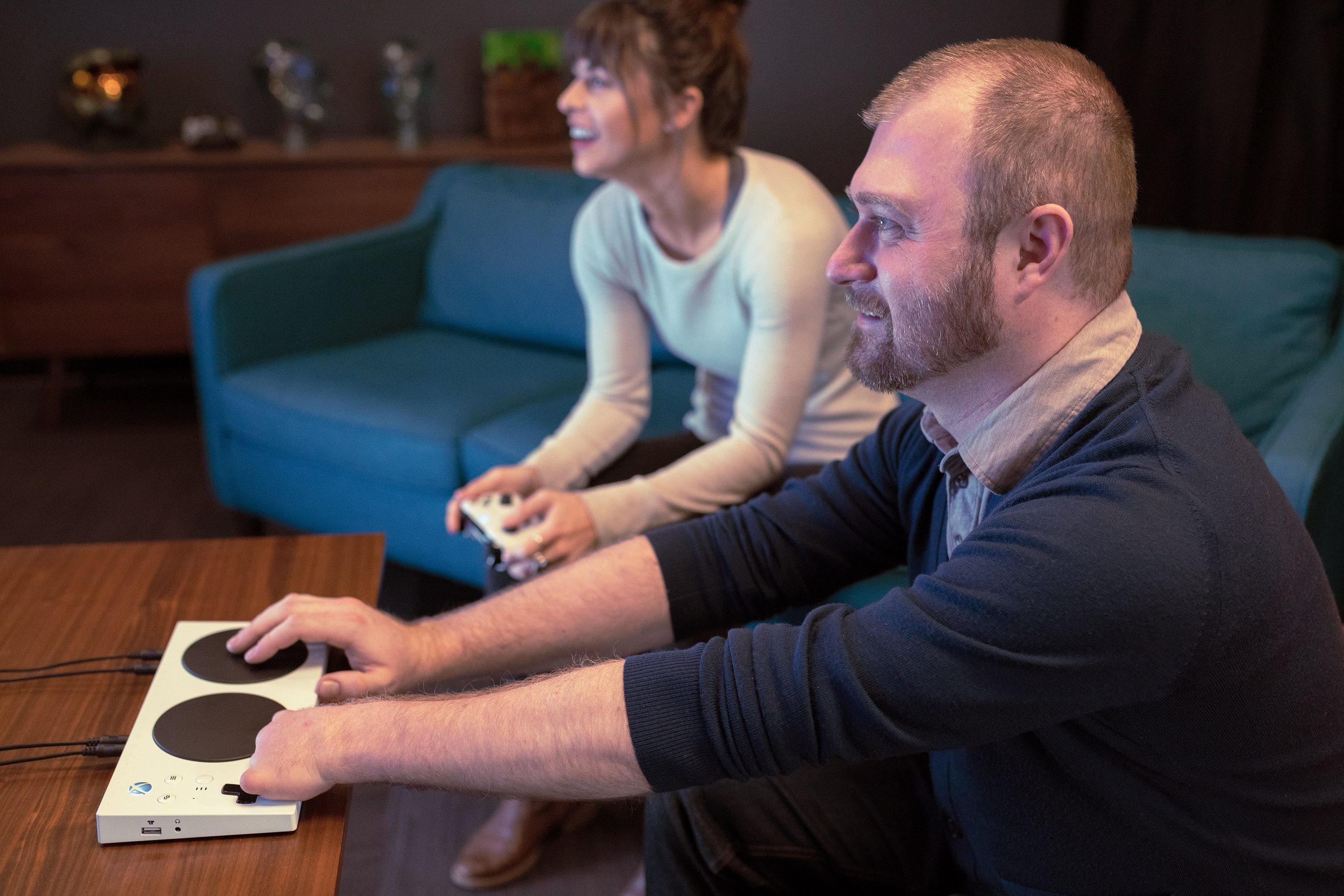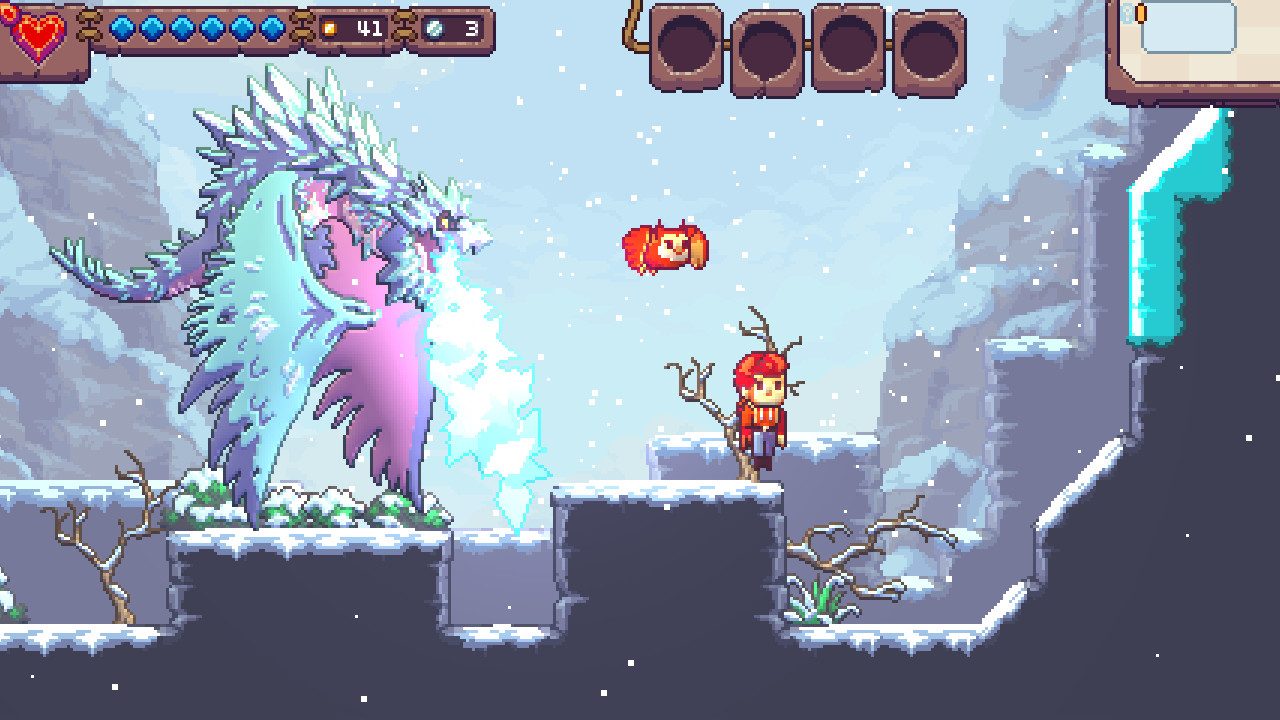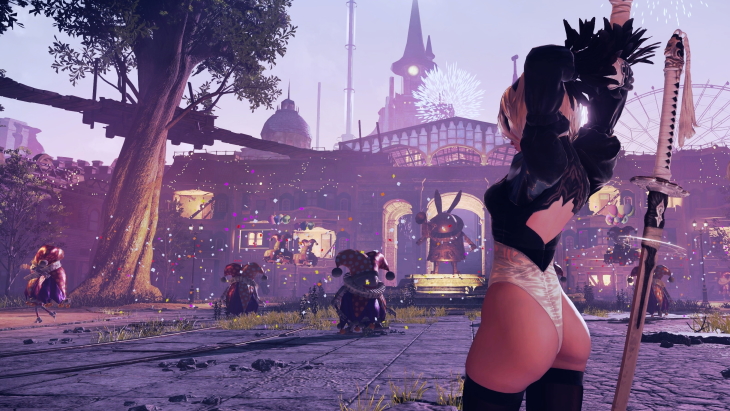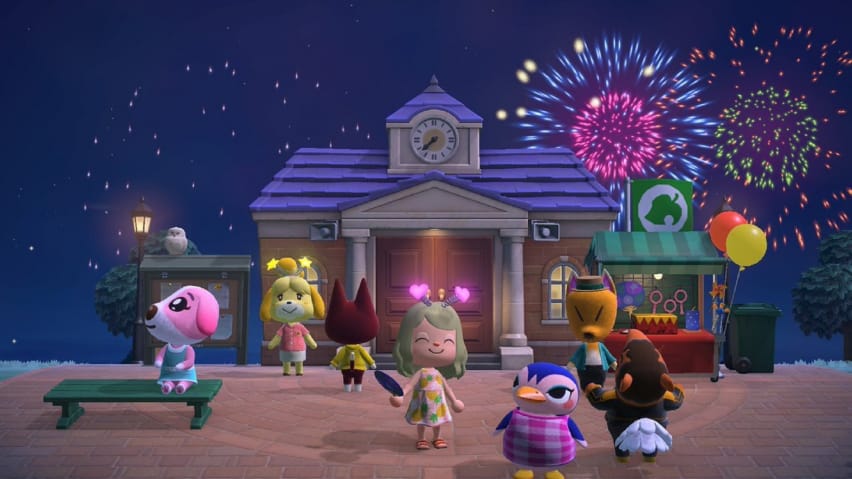In order to highlight the importance of this matter, Let’s start with some curious data brought after intensive research that many people may not be aware of, but it’s certainly important. There are around 33 million disabled Gamers in the United States alone – and about 92 Percent of Disabled People play video games. Crazy right? After this data, you might think that every Developer is doing something for accessibility in gaming. Sadly, that is not the case. A Dead By Light programmer had some harsh replies towards people asking for a Color-Blind mode in Dead By Daylight. After all the criticism that the developers received, they added a Color-Blind mode in the game. I’m really happy to see that they take the feedback seriously.
I am glad that “Harsh Replies towards accessibility options” is not the case with every developer; some developers such as Naughty Dog have set a bar for Accessibility in Gaming, in fact, according to Neil Druckmann (Creative Director of the Last of Us 2). Employees themselves put in extra hours and went through crunch because of their own decision; even when he asked them to go home, they just worked on these options and ignored Neil. If this is true, it makes me respect Naughty Dog much more. Even a blind gamer could complete The Last of Us Part 2 thanks to the amazing sound engineers at Naughty Dog.
It should be essential to add a thing like Color Blind Mode and Remapping Controls to games since it makes Gaming much easier and accessible for people.
Table of Contents
Steps Being Taken for Accessibility in Gaming
There are tons of steps being taken for Accessibility in Gaming, but it’s never “enough.” because I think that Developers should work on making Games accessible for as many people as they can. Recently Xbox released an All Adaptive Controller that helped disabled gamers all around the world. Sony released a Back Button Attachment for DualShock 4 as well, and it helped a lot of people. Sony has recently patented a Back-Button Attachment for DualSense. I am delighted to see that a lot of companies are taking steps to make Gaming more accessible.
A website called “Can I Play That?” is also startling for information related to Accessibility in Gaming; they review video games based on Accessibility too, but that’s not all – They help developers with their guides related to Accessibility as well. The Game Awards had an “Innovation in Accessibility” Award last year, which might encourage more studios to get creative with Accessibility options in their games. Ubisoft lists all accessibility features on the support website; for example, you can check out all the accessibility options in Immortal Fenyx Rising here.
EA has launched an Accessibility Portal where you can learn about all the accessibility options available in their games; they have opened up an Accessibility Section in their Forums where you can discuss issues or any options.
I love how many companies are working on adding Accessibility Options to their games. Accessibility is not just limited to adding options; there should also be localization and translated versions of games for those who cannot speak or understand English properly. Game Localisation doesn’t just help people; it helps the developers a lot since the sales are most likely to increase; for example, this Card Game called Gremlins, Inc. sold 4000 copies before they added Localisation of 12 Languages after they added the Localisation of 12 Languages they crossed 25k. So basically, Localisation can help you increase your profit a lot. Xbox has made an Accessibility Guidelines thing which helps developers all over the world to implement Accessibility options in their games properly. A thing has been done for Play Testing and Research in Accessibility. Accessible.Games can help you recruit disabled gamers to see if your Accessibility Options are working properly.
There are conferences for Accessibility in Gaming, too – such as GAconf (Which I might try to attend depending on my schedule).
Some things every developer should try to do to make their Game more Accessible

Things such as Larger Subtitles are easier to implement than most other Accessibility options. Hence, I think that it should be necessary at this point. All games should feature closed captions or subtitles to make a better experience for people with hearing disabilities; there are many steps developers should take. I am going to link some guides here about implementing Accessibility Options for the Video Game Developers reading this:
Accessibility options for people with Hearing Disabilities
Accessibility options for people with Physical Disabilities
Accessibility options for people with Cognitive Issues
Accessibility options for people with Low Vision
Accessibility options for people with Color Blindness
Games PR and Marketing Accessibility options
Every Game Developer should read these guides and try to implement these things in their games so more people can play. They should always take feedback about Accessibility very seriously.
I also think that developers shouldn’t let these options ruin their vision, so they should try to add other accessibility options that will not ruin the vision for their games. So basically, developers should focus on their own vision while trying their best to add Accessibility options. Sounds hard, Doesn’t it? Well, It is hard, but it is beneficial for your games; you will have more people who want to buy your game because of the accessibility settings.
I attended Devcom Call For Change Summit to research more about Accessibility in Games, where I got the opportunity to ask a question to Jonathan Bedard (UE Director at Ubisoft Quebec City); he has been working on Assassin’s Creed franchise and Immortals Fenyx Rising since a long time. The question I asked Jonathan was, “At what time of development period should developers consider adding Accessibility Options?”
He replied with:
Oh, that’s the best question we have had so far. From my perspective, I would say implementing the feature (Depending on the feature) in the Conception/Pre-Production Period is the best because then you can actually put those ideas in the Production – and in people’s mind in the creative division so they can plan everything properly. That is the key point here. It should never be a surprise because when it is a surprise, it will become a danger, and when it’s an injury, it’s not fun right? So then implementing that varies future of your development and accessibility needs to be implemented as early as possible while some other features as late as possible for example, If you go for Colour Blindness Filters, you should wait until the game is close to the final form, so you know what you will need to deal with, but you need to think about it very early however implementing these options is a different part.
I usually ask questions about Accessibility to developers in interviews as well. For example, I recently interviewed the developers behind Indie Game Alien Scumbags and asked them about the Accessibility Options in their Game, and their answer was fascinating to me. They replied to my question with: Accessibility has always been important to me. For example, we added subtitles to the intro scenes because of feedback from a streamer that was hard of hearing. More recently, we found some people were offended by some of the content, and as such, after a Twitter poll and after that, we added optional censorship.
It’s great to see indie developers focusing on accessibility and taking feedback about accessibility very seriously.
Some Discussions about Accessibility in Gaming with Ian Hamilton
I asked Ian Hamilton (Accessibility specialist) a question related to this the question was, “Should developers add accessibility options to their games even if it breaks their Proper vision?”
He responded with: I think first it’s important to say that it isn’t just about options, it’s about design decisions too; I prefer to use “accessibility considerations” as that covers both. Accessibility considerations, by definition, can’t really break a developer’s vision. If they did, they wouldn’t be accessibility considerations. Accessibility means ensuring that the developer’s vision reaches their players as intended.
If a player is encountering accessibility barriers, that likely means that they aren’t having the kind of experience that the developer imagined their players having.
There is a point, however, at which a piece of work – a design decision or option – ceases to be an accessibility consideration and instead becomes a fundamental change to what the game is about. Maybe that’s fine; maybe the resulting experience still holds value for the developer. Or maybe it doesn’t. That’s the developer’s call to make.
And that’s fine, and it’s not possible for any game to be accessible to everyone. The definition of “game” requires a goal with rules and systems, barriers sitting between you and that goal, providing a challenge. Universal accessibility would require the removal of all barriers, at which point what you’re interacting with is not a game. It is a narrative or a toy.
I really agree with what Ian said you got to consider every Accessibility option at first to help everyone play, just like Phil Spencer said, “When everybody plays, we all win.” and especially the last point where he said that Universal Accessibility is not possible because there would not be any barriers at all. The experience will just be like an interactive movie or a toy.
I have talked to many developers about Accessibility in Gaming, and a lot of Developers have said that sometimes they have to avoid adding Accessibility Options in their game so they can avoid things like Crunch and Development Hell. This mostly happens in the Mobile Gaming Development Industry. One time when a developer suggested adding Accessibility Options to their game, the Studio Head straight up said that it might put them in “Development Hell” I think this kind of behaviour is not good in the Gaming Industry at all. At least consider adding the minimal.
I asked Ian Hamilton a question related to this subject as well; the question was, “Some developers I have talked to about Accessibility Options said that they are unable to add everything at launch, and they do not want to be stuck in the Development hell. What are your thoughts on that?”
He responded with: It’s a journey. Nobody ever aces it on their first go. Take Naughty Dog; They started thinking about accessibility late in the development of Uncharted 4. They were able to implement a few nice features, learned some good things from that, and came away thinking, “damn, if only we had thought about this earlier, we could have done so much more.”
And that’s what they did. And the time they were in the early stages of development of The Last Of Us 2, and being able to consider accessibility earlier meant they could indeed do more and do it better. And now they’ll be able to take that experience and those workflows and learnings and so on forward into their next game and be able to do better again.
I did not know that Naughty Dog added Accessibility late in the development of Uncharted 4, so this was pretty interesting to me. The accessibility options in Uncharted 4 were some of the most advanced in 2016. This makes me respect Naughty Dog even more.
This explains how The Last of Us 2 broke new grounds in terms of Accessibility in Gaming too. Our team at Gaming Route gave The Last of Us 2 a Game of The Year award last year, and one of the main points in that article was about Accessibility. Our Editor Joel Scott wrote this in the article about Why we gave the Last of Us 2 our Game of The Year Award. “This piece wouldn’t be complete if I didn’t mention the gargantuan steps Naughty Dog has taken in pushing the envelope of video games accessibility as they did with their narrative. This video from blind gamer Steve Saylor perfectly explains Naughty Dog’s dedication to making gaming more accessible to people from all walks of life. This right here is the gold standard for what a AAA studio should strive to surpass if they want their games reaching out to more people.”
Some Developers have been harsh about Accessibility Options in the past, such as the Dead by Daylight Programmer, but after being called out for it, the developers announced a Color Blind Mode quickly.
Another example of doing things that are being called out for them would be Cyberpunk not having an epilepsy warning on the review units.
I asked Ian Hamilton for his thoughts on Developers adding accessibility options after they are called out for not having them.
Ian stated: The fact that developers are open to doing this is great. It certainly was not the case not too many years ago. But it is not ideal. It’s often much harder to implement features later in development, and to be honest, when your game has just launched. You are in a state of frantic exhaustion trying to fix all the unexpected bugs that popped up when it went live; the last thing you need is to have even more issues piled on top of that.
Text size is a nice example. A number of games have had to patch in better text size post-launch following player complaints. If you’ve already designed your whole interface around a certain text size, with fixed-size containers and so on, it can be excruciatingly difficult to try to go back in and change it; sometimes, it has taken months of work. But if you decide at the start of development that you simply aren’t going to use tiny text – that’s it, job done. No work required. It was a simple design decision.
There is a lot more that works like that in Gaming accessibility. So it’s worth being proactive and trying to do as much as you can as early as you can. It’s never too early.
I think that what Ian said might be very helpful for developers that are reading this. It is hard to implement features later in development, so you should try to implement these things while you are in development. After finishing your game, you might be worried about feedback from reviewers and things like bugs.
The key point is to think about everything as early as possible, just like Jonathan Bedard stated previously.
After that, I asked Ian, “What game do you think had the best Accessibility Options?”
That’s a hard question to answer, as what does ‘best’ mean? Serves the most underserved audience? Has the largest number of options? Pushes the industry furthest the most?
So rather than picking out a ‘best,’ I’ll just name a few games that are worth checking out -Eagle Island and Sequence Storm, incredible illustrations of how much can be done by a solo indie developer. The Last Of Us 2, the first AAA game designed from the ground up to be fully accessible to completely blind gamers. Sea Of Thieves, who have been on an incredible journey of something like 30 accessibility patches over the lifetime of the game.
I personally think that The Last of Us 2 set a new bar for Accessibility in gaming, but that was a AAA game on which around 2000+ People worked. I really want to check out Eagle Island and Sequence Storm now because they are developed by a solo Indie Developer.
The last question I asked Ian was, “Game Accessibility has evolved a lot in recent years. Are there any things that really stood out for you?”
And he responded with:
I agree; it has changed beyond all recognition. Here are a few quick bullet points of some of the key moments over the past 10 years – 2012 – Launch of http://gameaccessibilityguidelines.com and includification, the first accessibility resources to gain wide traction amongst developers.
2013 – Injustice becomes the first AAA game to include an accessibility consideration for blind gamers (option for an additional audio cue to tell you when your character is in front of an interactive background object).
2014 – A range of prominent AAA games include colorblind support, either at launch or through patches, such as Borderlands 2 and Sim City. This, combined with widely read articles on colorblindness on Kotaku and IGN, results in a rapid increase in awareness and consideration over the following years.
2015 – Xbox and PlayStation gain their first accessibility features, in part due to CVAA legislation.
2016 – Uncharted 4 launches, a highly influential AAA title with a wide range of accessibility considerations and extensive publicity efforts around it, with a significant and direct impact on many other developers.
2017 – GAconf launches, a conference dedicated solely to game accessibility, quickly growing to a bi-annual event across Europe and the USA, and becoming a hub for the accessibility community.
2018 – Launch of the Xbox Adaptive Controller to vast fanfare, including a Superbowl ad watched by over 100 million people, raising incredible amounts of awareness amongst gamers and developers; even Cher and T-Pain tweeted about it.
2019 – An avalanche of AAA accessibility efforts, including Apex Legends, Crackdown 3, Metro Exodus, FIFA 19, Far Cry New Dawn, Minecraft, Fortnite, Jedi Fallen Order, Days Gone, Division 2, Devil May Cry 5, Sea of Thieves, Forza Horizon 4, Overwatch, Gears of War 5, Borderlands 3, Ghost Recon Breakpoint, Halo MCC and Madden 20; accessibility now truly mainstream.
2020 – The Last Of Us 2 launches with even greater influential impact than Uncharted 4, with over 60 options, including being the first AAA designed from the ground up to have fully blind-accessible gameplay and menus, and a widespread of other games truly pushing the boundaries of accessibility innovation like Sequence Storm, Eagle Island, Spiderman: Miles Morales, Sea of Thieves, Hyperdot and WatchDogs Legions, some of which were recognized at the end of the year at The Game Award’s new accessibility award category.
2021 – Xbox launches newly reworked freely available accessibility guidelines, in conjunction with a paid accessibility testing service open to anyone developing PC or Xbox games, including employment of and testing by disabled gamers.
Hopefully, those few bullet points can give a bit of a flavour of just how quickly the pace of change is accelerating. And the industry still has a long way to go before it gets to the point that it could or should be at… we are only just getting started. The evolution here is truly remarkable. I am thrilled to see that developers worldwide are working hard to make their games accessible for everyone they can. Developers should try to experiment with these Accessibility Options and try to create new ones as well.
Accessibility inside Studios
Accessibility is not only limited to being in games. An Accessible Environment is essential in studios, along with diversity. I think that you should focus on making things Accessible in your offices, especially if any of your employees are disabled. There should be no such thing as harassment which was sadly pretty common previously (and still is in some studios) in the Gaming Industry. Still, I am really glad to see things like this getting exposed and Studios trying to improve their work environment because it is an essential thing not just in Gaming but in nearly every Job; sadly, in some countries, most workplaces just completely ignore accessibility. I think this is where change should be brought first.
Things you can do for Accessibility in Gaming
Many charities help disabled gamers worldwide, such as AbleGamers currently; Steve Spohn (COO of AbleGamers) is running a fundraiser. He is trying to raise over 1 Million Dollars to help disabled gamers worldwide with things such as equipment for his 40th Birthday.
AbleGamers have previously done a lot of stuff in Gaming Accessibility; they helped Xbox design the all adaptive controller.
The Spawn Together Fund-Raiser has already raised 260K US Dollars; you can donate by clicking here.
If you are from the UK, you can try to donate some money to the Charity Organisation “Special Effect” they have helped many disabled Gamers with equipment and stuff like that.
You can donate money to Special Effect here.
Special Effect has also made EyeMine which can help you play Minecraft with your eyes alone I am really impressed by this kind of stuff that the charities are doing. And yes, Special Effect will not charge you; if you want help with equipment or some equipment, you can contact Special Effect here and just ask about the things you need help with if you are a disabled gamer.
Another thing you can do if you are experiencing issues with a lack of accessibility option is that you can contact try to contact the developers of the game and kindly ask them for accessibility options; just never be afraid of asking most developers to take this Accessibility in Gaming very seriously nowadays.
I think that VR games currently lack accessibility options, and developers should work on accessibility options for VR. Most VR games do not even offer Closed Captions or Subtitles at all. You can also get motion sickness along with headaches if you play too much in one day on your VR. The VR Industry definitely needs a huge improvement in terms of accessibility. I think that change can be brought; they should let you play VR with a gamepad on Oculus Quest 2 along with their own controllers, so you do not have to move much by yourself.
That’s all I have to say for now – and thank you so much to Ian Hamilton, Jonathan Bedard and James (developer of Alien Scumbags) for helping me with this article and helping me to learn new things about Games Accessibility I hope everyone who is reading this learned something new as well and for the developers who are reading this, please take the tips given in this article and imply them to your projects just remember “When everybody plays we all win.”


